
Computers have come a long way since the early days, when two of the machines could take over a four-story building and weigh up to 250 tons. As early as the 1930s, inventors, engineers and physicists were figuring out ways to use machines to perform complex calculations and processes, employing pioneering methods to achieve their goals. Although some of those techniques and devices are now blissfully obsolete, many early innovators hit upon technologies that are still in use today. These 10 colossal old computers are a testament to the alluring potential of computing and the ingenuity of early computer scientists – as well as a visual demonstration of just how far we’ve come.
10. Universal Automatic Computer (UNIVAC) – 1951

The first UNIVAC computer was designed and developed by Dr. John Mauchly and J. Presper Eckert – who also invented the Electronic Numerical Integrator And Computer (ENIAC) – between 1946 and 1951. Up to this point, most computers were unique systems and weren’t replicated. But not the UNIVAC. It was the first functional mass-produced business computer in history and opened the door to a larger commercial market.
Although only 46 of the first-generation UNIVAC were built, the machine made waves in 1952 when, on national TV, it correctly predicted the outcome of the presidential election between vying candidates Eisenhower and Stevenson. Based on a small fraction of early votes, the UNIVAC figured the odds were in Eisenhower’s favor, and his landslide victory placed the computer firmly in the public eye. People began to realize just how significant a contribution computers could make.
9. IBM 305 Random Access Method of Accounting and Control (RAMAC) – 1956
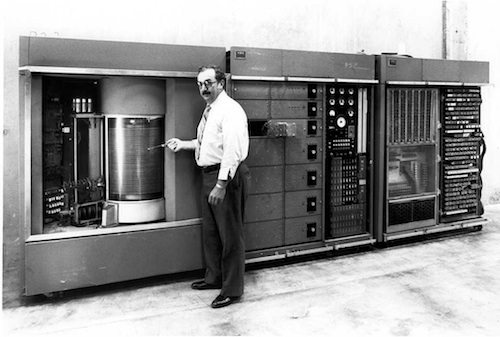
Introduced in 1956, IBM’s 305 RAMAC was the first general-purpose computer that facilitated the “random access” of data in real time. Inventor Reynold B. Johnson and his team of engineers had only started working on the technology in 1952. The 305 RAMAC was the earliest commercial computer to feature magnetic disk storage, and it only took around 600 milliseconds to execute the “seek” command.
The system’s magnetic disk memory unit was made up of 50 disks with 50,000 sectors, and the disks could spin at 1,200 revolutions per minute. Businesses were now able to store and access information on demand. Thanks to the 305 RAMAC, data processing had been revolutionized forever.
8. Atlas Computer – 1962
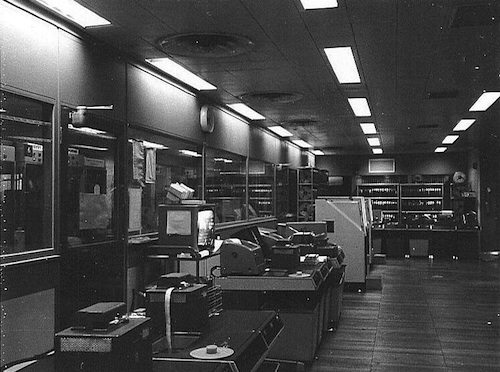
On December 7, 1962, the University of Manchester switched on the first model of their groundbreaking Atlas Computer – and according to historians, simply turning on the machine increased the scientific computing capacity of the entire United Kingdom by 100 percent. The Atlas could handle around one million commands a second.
When it was unveiled, the Atlas was described as the world’s most powerful computer. Yet in order to achieve this high power, several new techniques had to be integrated, including multiprogramming, interleaved storage, and virtual memory. Many of the techniques and software concepts developed with the Atlas are still used in computers and other technological devices today. Thus, the Atlas was monumental – not just in terms of physical scale but also from a historical perspective.
7. Differential Analyzer – 1931
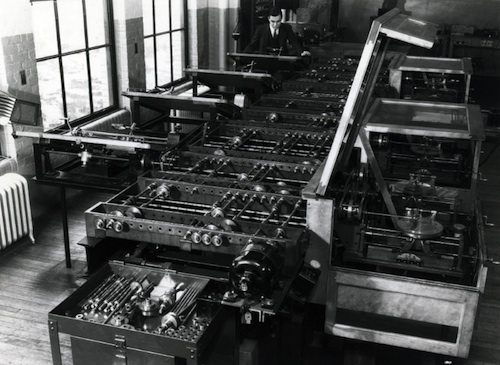
From 1928 to 1931, American engineer and inventor Professor Vannevar Bush developed the sprawling Differential Analyzer at the Massachusetts Institute of Technology (MIT). He did so with the help of graduate students, most notably Harold Locke Hazen. The Differential Analyzer was an analog electromagnetic device that, in the words of the MIT museum, “mechanized calculus.” It provided solutions to complex calculations and was used around the clock during WWII.
This giant machine was employed to work out problems from the MIT Radiation Laboratory. The lab carried out work on WWII microwave radars as well as the radio navigation system known as Long Range Navigation (LORAN).
6. Atanasoff-Berry Computer (ABC) – 1942

Comprehensively tested in 1942, The Atanasoff-Berry Computer, also known as the ABC, was the world’s first electronic digital computer. The machine was envisaged in 1937, and John Atanasoff and student Clifford Berry developed it at Iowa State University between 1939 and 1942. Although physically smaller than most of the historical giants on this list, it featured several groundbreaking features, including the use of dynamic capacitors to store memory (similar to RAM).
The machine could also uphold 30 different operations at the same time and solve linear algebraic equations with up to 29 variables – a huge step up from the simple desk calculator. The ABC became an important predecessor to the ENIAC, which was introduced in 1946.
5. Whirlwind I – 1951
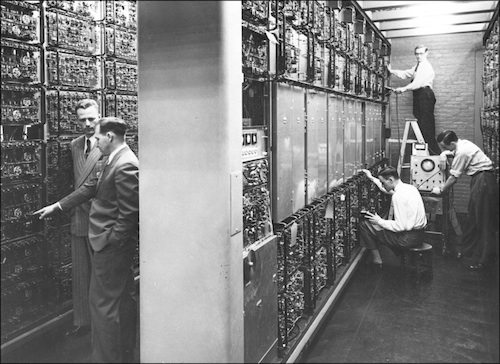
Built from 1948 to 1951, the Whirlwind I computer system was developed by the MIT Servomechanisms Laboratory as part of a US Navy training program. The intention was to create a computer that was much faster than its contemporaries and capable of running on a constantly shifting series of inputs to create complicated flight simulations. This led to the development of the bit-parallel mode, which is still in use today, and proved that real-time control was possible. The usage of video displays for output was another revolutionary first.
Later, the Whirlwind II was used in the US Air Force’s SAGE air defense program. The technology that came with the creation of the Whirlwind I was also instrumental in many computers in the 1960s.
4. Colossus Computer – 1943

The Colossus was the first programmable electronic digital computer on Earth. In 1943, the original version of the machine was built in London by a team of British engineers working under Dr. Tommy Flowers. Colossus computers were used specifically by Allied codebreakers during WWII, which is why the machine was kept under wraps for years – even after WWII.
However, the people who worked on the Colossus had a huge impact on computing. Alan Turing, Max Newman and I.J. Good, who all had a hand in the Colossus, went on to lend their expertise to other significant computer systems and software developments after the first Colossus had been dismantled.
3. Electronic Numerical Integrator and Computer (ENIAC) – 1946
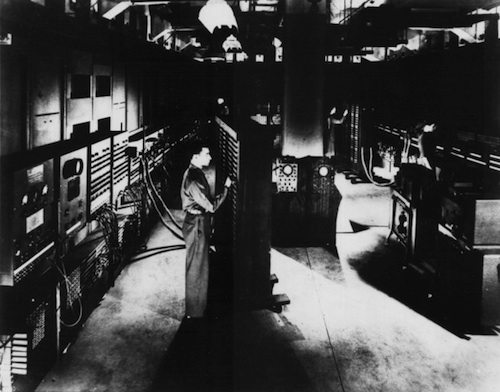
The ENIAC stands as one of the most influential computers in history. Physicist Dr. John Mauchly and electrical engineer J. Presper Eckert – the duo behind the UNIVAC – worked with a team at the University of Pennsylvania’s Moore School of Electrical Engineering to develop it. The computer was unveiled in 1946 and was lauded by the media as a “giant brain.” Not only could it solve mathematical equations, but it was programmable to boot.
The machine was developed to work out artillery firing tables, and it could compute a 60-second firing trajectory in half a minute – while Bush’s Differential Analyzer took a quarter of an hour to perform the same operation. What’s more, weighing in at more than 30 tons and covering 1,800 square feet of floor space, the ENIAC was definitely colossal.
2. Z1 – 1938

It took Konrad Zuse a few years to design and build the Z1 computer in his parents’ apartment. He began designing the machine in 1935 and completed its construction in 1938. And although it was only the first of multiple models, it led to several important developments.
Each time Zuse made a new model, he improved upon the old one – and in 1941 he created the Z3, a fully functional computer that had a huge amount of memory, relays that ran on a yes/no principle, and binary floating-point arithmetic. It was programmable and contained nearly all the basic elements of later computers. Following on from the Z3, Zuse sold approximately 300 of his Z4 machines.
1. IBM AN/FSQ-7 – 1958
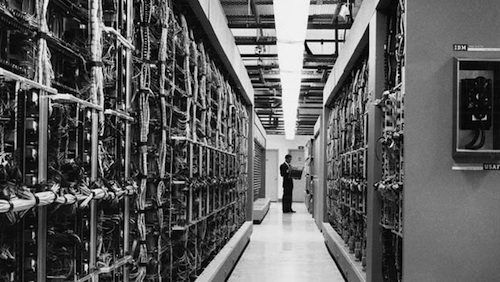
IBM’s AN/FSQ-7 is the biggest computer ever constructed and is expected to remain so. The huge system used two second-generation Whirlwind computers and weighed an incredible 250 tons. By 1955, a prototype AN/FSQ-7 had been installed in the US Air Force’s Semi-Automatic Ground Environment (SAGE) test sub-sector in Lexington, Massachusetts. Each AN/FSQ-7 comprised 24 machines and provided for over 100 users.
During the Cold War, the system was employed to track enemy bombers and predict points of interception. Impressively, its algorithm was able to launch a Bomarc missile and guide it until the missile’s homing mechanism took effect. The AN/FSQ-7 was a brilliant early design for air traffic-control systems; and significantly, it featured the first real-time cathode ray tube (CRT) interface. If that weren’t enough, it used the earliest wide-area modem communication network and also pioneered the use of light gun pointing devices.

